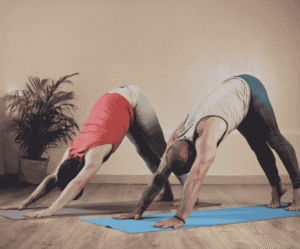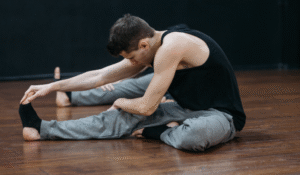What Is the Rotator Cuff?
The rotator cuff is a group of four muscles and tendons that stabilize your shoulder joint. These muscles keep your upper arm bone firmly seated in the shoulder socket and help with movements like lifting, rotating, and reaching.
When these tendons become irritated or torn, the result is a rotator cuff injury, which can cause sharp or dull pain, stiffness, and muscle weakness.
Table of Contents
Types of Rotator Cuff Injuries
Rotator cuff injuries can vary in severity. Here are the most common types:
1. Tendinitis
Inflammation of the rotator cuff tendons, usually caused by repetitive motion.
2. Bursitis
Inflammation of the fluid-filled sacs [bursa] that cushion your shoulder joint.
3. Partial Tear
A tendon is damaged but not completely torn. This can cause moderate pain and weakness.
4. Full-Thickness Tear
A tendon is completely torn away from the bone, often requiring surgical repair.
Who Is Most at Risk?
Rotator cuff injuries affect a wide range of people, but some groups are more vulnerable:
Adults over 40, due to natural tendon degeneration
Athletes who play sports that involve throwing or overhead motions [tennis, baseball, swimming]
Workers in construction, painting, or other manual labor roles
People with poor posture or a sedentary lifestyle
Common Signs and Symptoms
Rotator cuff injuries often start subtly, but symptoms tend to worsen over time. Look out for:
Pain when lifting or rotating the arm
Difficulty sleeping on the affected shoulder
Shoulder weakness or stiffness
Clicking or popping sounds during movement
Limited range of motion
How Is a Rotator Cuff Injury Diagnosed?
Diagnosis usually begins with a physical examination, where the doctor evaluates your arm strength, flexibility, and range of motion.
In many cases, imaging tests are needed to confirm the diagnosis:
X-rays to check for bone spurs or arthritis
MRI or ultrasound to detect soft tissue tears or inflammation
Treatment Options That Actually Work
The right treatment depends on the severity of the injury. Many rotator cuff problems can be treated without surgery, especially if caught early.
1. Rest and Activity Modification
Avoid overhead movements and heavy lifting. Give the shoulder time to heal.
2. Physical Therapy
Rehabilitation exercises help restore mobility, improve strength, and reduce pain. A trained therapist will guide your recovery.
3. Anti-Inflammatory Medications
Over-the-counter drugs like ibuprofen or naproxen can relieve swelling and discomfort.
4. Steroid Injections
Corticosteroid shots may provide temporary relief for more severe inflammation.
5. Surgery
Reserved for cases involving large tears or failed conservative treatments. Surgical options include arthroscopic repair or tendon reattachment.
Exercises to Support Recovery
Pendulum Swings: Gently loosen up the joint
Wall Crawls: Improve flexibility using your fingers to climb a wall
External Rotations with Band: Strengthen shoulder stabilizers
Shoulder Blade Squeezes: Enhance posture and back support
How to Prevent Rotator Cuff Injuries
Prevention is easier than treatment. Protect your shoulder with these habits:
Strengthen your upper back and shoulder muscles regularly
Avoid repetitive overhead tasks without proper breaks
Improve posture at your workstation
Warm up properly before physical activity
Pay attention to early signs of pain or stiffness
FAQs About Rotator Cuff Injuries
Can a rotator cuff tear heal without surgery?
Yes. Many partial tears respond well to physical therapy and rest. Surgery is only needed in severe cases.
How long does it take to recover?
Minor injuries can improve within weeks. More serious injuries may take several months or longer, especially after surgery.
Should I use ice or heat?
Use ice for the first 48 to 72 hours to reduce inflammation. After that, heat can help loosen tight muscles and improve blood flow.
Can I still exercise with a rotator cuff injury?
Yes, but only under professional guidance. Avoid overhead movements until the injury has improved.
Conclusion
Rotator cuff injuries are common, but they do not have to control your life. With early detection, proper care, and a structured recovery plan, you can regain full use of your shoulder without surgery.
If you are experiencing ongoing shoulder pain, limited motion, or sleep disruptions, do not ignore the warning signs. The sooner you take action, the better your chances of a full recovery.



